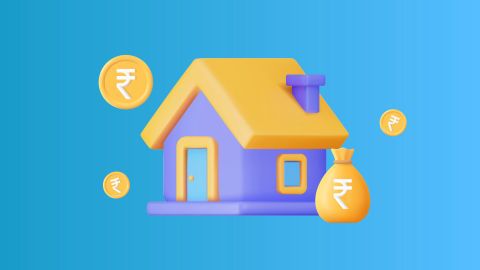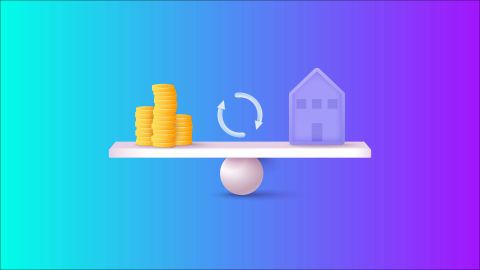As the financial year 2023-2024 unfolds, individuals earning a salary of Rs. 10 lakh face important decisions regarding income tax. Understanding the tax slabs, deductions, and exemptions are crucial for optimising tax liability. In this article, we will explore the income tax implications under both the new and old tax regimes, along with deductions, exemptions, and the minimum deductions required for incomes exceeding Rs. 10 lakh.
Income tax slabs for FY 2025-2026 as per the new tax regime
The new tax regime, designed to simplify tax structures, offers lower tax rates but with fewer deductions. For individuals earning Rs. 10 lakh, the income tax slabs are as follows:
- Up to Rs 4 lakh: Nil tax
- Rs 4,00,001- Rs 8,00,000 : 5%
- Rs 8,00,001 lakh - Rs 12,00,000 : 10%
- Rs 12,00,001 lakh - Rs 16,00,000: 15%
- Rs 16,00,001 lakh - Rs 8,00,000 : 20%
- Rs 20,00,001 lakh - Rs 24,00,000 : 25%
- Above Rs 24,00,001 : 30%
This implies that if your annual income is Rs. 10 lakh, you fall within the 10% tax bracket under the new regime.
Income tax slabs for FY 2024-2025 as per the old tax regime
For those opting to stay with the old tax regime, which provides more deductions and exemptions, the slabs are:
- Up to Rs. 2.5 lakh: Nil
- Rs. 2,50,001 to Rs. 5,00,000: 5%
- Rs. 5,00,001 to Rs. 7,50,000: 10%
- Rs. 7,50,001 to Rs. 10,00,000: 15%
Comparing the two regimes, individuals earning Rs. 10 lakh might find the old tax regime advantageous due to the higher deduction options.
New income tax regime and old tax regime
Net annual income |
Old tax regime | New tax regime |
Up to Rs. 2.5 lakh |
Nil |
Nil |
Rs. 2.5 lakh – Rs. 4 lakh |
5% |
Nil |
Rs. 4 lakh – Rs. 5 lakh |
5% |
5% |
Rs. 5 lakh – Rs. 8 lakh |
20% |
5% |
Rs. 8 lakh – Rs. 10 lakh |
20% |
10% |
Rs. 10 lakh – Rs. 12 lakh |
30% |
10% |
Rs. 12 lakh – Rs. 16 lakh |
30% |
15% |
Rs. 16 lakh - Rs. 20 lakh |
30% |
20% |
Rs. 20 lakh - Rs. 24 lakh |
30% |
25% |
More than Rs. 24 lakh |
30% |
30% |
How to calculate income tax on Rs. 10 lakh salary?
- Determine gross income: Start with your total salary, which is Rs. 10 lakh
- Claim deductions: Use deductions under Section 80C, up to Rs. 1.5 lakh, if applicable.
- Calculate taxable income: Subtract deductions from your gross income (Rs. 10 lakh - Rs. 1.5 lakh = Rs. 8.5 lakh).
- Refer to tax slabs: Use applicable tax slabs to calculate your tax liability.
- Use an income tax calculator for precise calculations and to simplify the process.
Understanding salary structure
Various tax-exempt allowances may be a part of your salary component. Your taxable income is the remaining salary.
Particular |
Amount |
Gross salary u/s 17(1) |
XXXX |
Less: exemption u/s 10 |
|
HRA exemption |
XXXX |
LTA exemption |
XXXX |
Reimbursement |
XXXX |
Children's education and hostel allowance |
XXXX |
Less: Deduction u/s 16 |
|
Standard deduction |
XXXX |
Income under the head salary |
XXXX |
Less: Deduction under Chapter VI-A |
|
Section 80C |
XXXX |
Net total income |
XXXX |
Thus, tax savings can be maximised through exemptions and deductions. However, keep in mind that most of the deductions are available only in the old tax regime.
Deductions and exemptions under new tax regime
Under the new tax regime, and exemptions are limited. However, taxpayers can still claim deductions under Section 80CCD (2) for an employer's contribution to the National Pension Scheme (NPS).
Here are some key points regarding deductions and exemptions under the new tax regime:
- Standard deduction:
The new tax regime provides a standard deduction of Rs. 50,000 for salaried and pensioned individuals. - Deductions under Section 80CCD (2):
Taxpayers can claim deductions for the employer's contribution to the National Pension Scheme (NPS) under Section 80CCD (2). - Other deductions and exemptions:
Most traditional exemptions and deductions available under the old tax regime, such as House Rent Allowance (HRA), Leave Travel Allowance (LTA), and deductions under Sections 80C (like Provident Fund contributions, life insurance premiums, etc.), are not available in the new tax regime. - No exemptions for allowances:
Various allowances like transport allowance, medical reimbursement, and other exemptions that were available in the old regime are not applicable in the new regime. - Taxpayers' choice:
Taxpayers have the flexibility to choose between the new and old income tax regime based on their individual financial situations. While the new regime offers lower tax rates, the old regime provides more deductions and exemptions, allowing taxpayers to reduce their taxable income.
Deductions and exemptions under old tax regime
Part I - Exemptions
Your salary structure can be determined from the CTC, which typically looks like this:
Salary component |
Taxability |
Basic |
Fully-taxable |
Dearness Allowance |
Fully-taxable |
House Rent Allowance (HRA) |
Exempt up to a certain limit. Calculate now |
Leave Travel Allowance (LTA) |
Actual travel ticket expenses are exempt for two trips in 4 years under 10(5). Read more |
Mobile/ Internet reimbursement |
Exempt if: |
– used predominantly for office purposes – proofs/bills submitted |
|
Children's education and hostel allowance |
Rs. 4800 per child (max 2 children) |
Food |
Rs. 50 per meal (max 2 meals a day) |
Annual = Rs. 26,400 (50*2*22 days*12 months) |
|
Professional tax |
Generally, Rs 2,400 (Varies from state to state) |
Part II - Deductions
When planning your taxes for a salary above Rs. 10 lakh, here are the deductions you can expect:
Salary component |
Taxability |
Basic |
Fully-taxable |
Dearness Allowance |
Fully-taxable |
House Rent Allowance (HRA) |
Exempt up to a certain limit. Calculate now |
Leave Travel Allowance (LTA) |
Actual travel ticket expenses are exempt for two trips in 4 years under 10(5). Read more |
Mobile/ Internet reimbursement |
Exempt if: |
– used predominantly for office purposes – proofs/bills submitted |
|
Children's education and hostel allowance |
Rs. 4800 per child (max 2 children) |
Food |
Rs. 50 per meal (max 2 meals a day) |
Annual = Rs. 26,400 (50*2*22 days*12 months) |
|
Professional tax |
Generally, Rs 2,400 (Varies from state to state) |
Paying health insurance policy |
Self, your spouse, and your dependent children: |
Premium |
Rs 25,000 (Rs 50,000 if aged 60 and above) |
(Section 80D) |
Parents: Rs 25,000 (Rs 50,000 if aged 60 and above) |
Opting for an education loan (Section 80E) |
Interest deduction for 8 years from the year of repayment of loan taken for the higher education of yourself, your spouse, dependent children, or a student of whom you are the legal guardian |
Donating to charity (Section 80G) |
50% or 100% of the eligible amount for notified institutions. |
Investing in tax saving instruments |
Tax benefit of Rs.1,50,000 per year. You can invest in the following options: |
(Section 80C) |
– Employees’ Provident Fund (EPF) |
|
– Public Provident Fund (PPF) |
|
– Equity Linked Saving Scheme funds (ELSS) |
|
– Home loan repayment and Stamp duty |
|
– Sukanya Smriddhi Yojana (SSY) |
|
– National Savings Certificate (NSC) |
|
– Fixed Deposit for 5 years, and more |
Costs to treat disabled dependents (Section 80DD) |
If you have disabled dependents for whom you bear |
medical expenses, you are eligible for the tax relief: |
|
– 40% disability: Rs.75,000 |
|
– 80% or severe disability: Rs.1,25,000 |
|
Deductions on home loan payments |
Principal amount: Upto Rs 1.5 lakhs u/s 80C |
Interest amount: Upto Rs 2 lakhs paid under section 24b |
|
The maturity amount of a Life Insurance Policy |
Maturity proceeds are tax-exempt if the sum assured is ≤: |
– 20%: policies issued before 1 April 2012 |
|
– 10%: policies issued after 1 April 2012 |
|
– 15%: policies issued after 1 April 2013 for a person with disability or disease. |
|
– Exemption is applicable in case of ULIP only if the annual premium does not exceed Rs 2,50,000 (From 1st April 2021) |
|
– Exemption is applicable in case of Life insurance other than ULIP only if the annual premium does not exceed Rs. 5,00,000 (From 1st April 2023 onwards) |
|
Standard deduction |
Rs 50,000 (Will be given to all without any restrictions) |
Minimum deduction required if income is more than Rs. 10 lakh
When your income exceeds Rs. 10 lakh, exploring deductions becomes essential to optimise your tax liability. Here are some common deductions that individuals can consider if their income surpasses Rs. 10 lakh:
- Section 80C deductions:
Individuals can claim deductions under Section 80C for various investments and expenses, including contributions to the Employees' Provident Fund (EPF), Public Provident Fund (PPF), Equity-Linked Savings Scheme (ELSS), National Savings Certificates (NSC), and payment of life insurance premiums. - Home loan interest (Section 24(b)):
If you have a home loan, the interest paid on the loan is eligible for deduction under Section 24(b) of the Income Tax Act. This deduction is available for both self-occupied and let-out properties.
Planning to purchase your dream home with a tax-efficient loan? A home loan from Bajaj Finserv offers competitive interest rates starting from 7.45%* p.a and allows you to claim substantial tax benefits on both principal and interest components. Check your eligibility for a home loan from Bajaj Finserv today. You may already be eligible, find out by entering your mobile number and OTP. - Health insurance premiums (Section 80D):
Deductions can be claimed under Section 80D for premiums paid towards health insurance policies for yourself, your spouse, children, and parents. The deduction limit depends on the age of the insured individuals. - National Pension Scheme (NPS) (Section 80CCD):
Apart from the employer's contribution, individuals can also claim deductions for their contributions to the National Pension Scheme (NPS) under Section 80CCD. - Education loan interest (Section 80E):
If you have taken an education loan for yourself, your spouse, or children, the interest paid on the loan is eligible for deduction under Section 80E. - Standard deduction:
In the new tax regime, there is a standard deduction of Rs. 50,000 available for salaried and pensioned individuals.






